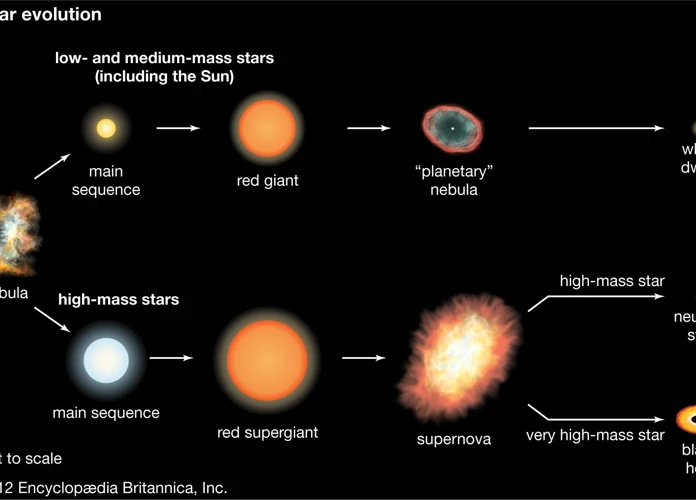The universe is an awe-inspiring place, filled with countless stars that twinkle in the night sky. But have you ever wondered how these celestial bodies come into existence and what happens to them over time? Stellar evolution holds the key to understanding the life cycle of stars and the profound impact they have on the universe as a whole. From the formation of stars to their eventual demise, each stage of stellar evolution brings new insights into the workings of the cosmos. In this article, we will delve into the importance of stellar evolution and how it contributes to our understanding of the vast and mysterious universe we inhabit. So, let’s embark on a captivating journey through the stars and unlock the secrets they hold.
Contents
- What is Stellar Evolution?
- The Stellar Lifecycle
- Impact of Stellar Evolution on Cosmic Events
- Using Stellar Evolution as a Cosmic Yardstick
- Unraveling the Origins of Life
- Stellar Evolution and the Expanding Universe
- The Future of Stellar Evolution Studies
- Conclusion
-
Frequently Asked Questions
- 1. How long does stellar evolution take?
- 2. Can stars be born anywhere in the universe?
- 3. What happens during a star’s red giant phase?
- 4. What triggers a supernova explosion?
- 5. How are elements heavier than iron formed in stellar evolution?
- 6. Can stars become black holes?
- 7. How do astronomers measure the distance to stars?
- 8. Can the age of a star be determined?
- 9. How does stellar evolution relate to the origin of life?
- 10. How does stellar evolution contribute to our understanding of the expanding universe?
- References
-
Frequently Asked Questions
- 1. What is the significance of stellar evolution in understanding the universe?
- 2. How does stellar evolution impact cosmic events?
- 3. Can stellar evolution be used as a yardstick for measuring cosmic distances?
- 4. What role does stellar evolution play in unravelling the origins of life?
- 5. How does stellar evolution link to cosmological models?
- 6. How does stellar evolution connect to the expanding universe?
- 7. What is the future of stellar evolution studies?
- 8. How is the age of celestial objects estimated using stellar evolution?
- 9. How does stellar evolution impact the habitability of exoplanets?
- 10. How does stellar evolution contribute to element formation?
- References
- Read More
What is Stellar Evolution?
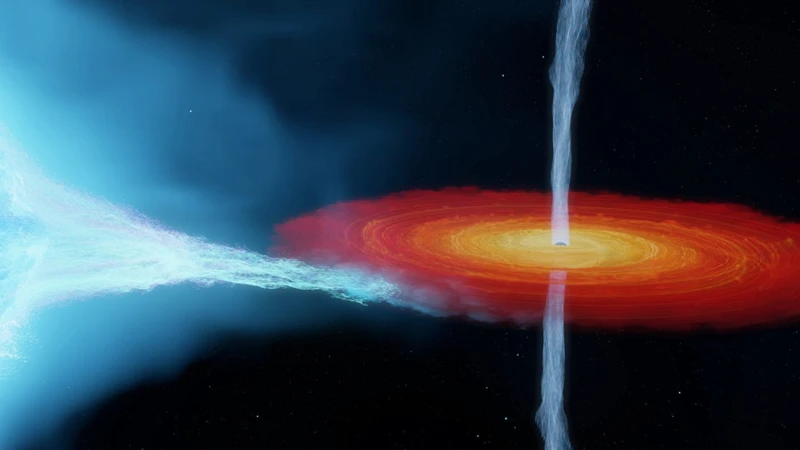
Stellar evolution is a captivating process that describes the life cycle of stars, from their formation to their eventual demise. It is a journey that spans billions of years and encompasses a wide range of cosmic events. Stars are born from vast clouds of gas and dust called nebulae, undergoing gravitational collapse. As the material accumulates, it forms a dense core known as a protostar. Stellar evolution continues as the protostar grows hotter and denser, eventually reaching a point where nuclear fusion ignites in its core. This marks the beginning of the star’s main sequence stage, where it will spend the majority of its life, steadily converting hydrogen into helium and releasing vast amounts of energy in the process. Throughout this phase, stars maintain a delicate balance between the inward pull of gravity and the outward push of fusion-generated radiation. However, a star’s fate is dependent on its mass. High-mass stars burn through their fuel more quickly, leading to a rapid evolution that includes expanding into red giants and eventually exploding in a brilliant supernova. On the other hand, low-mass stars like our Sun undergo a more gradual transformation, swelling into red giants before shedding their outer layers and leaving behind a dense, glowing core known as a white dwarf. The study of stellar evolution allows us to unravel the mysteries of star formation, understand the elements that make up our universe, and gain insights into cosmic phenomena such as galaxy evolution and the origins of life. So, let us now delve deeper into the intriguing journey of stellar evolution and its significance in understanding the workings of the vast universe we inhabit.
The Stellar Lifecycle
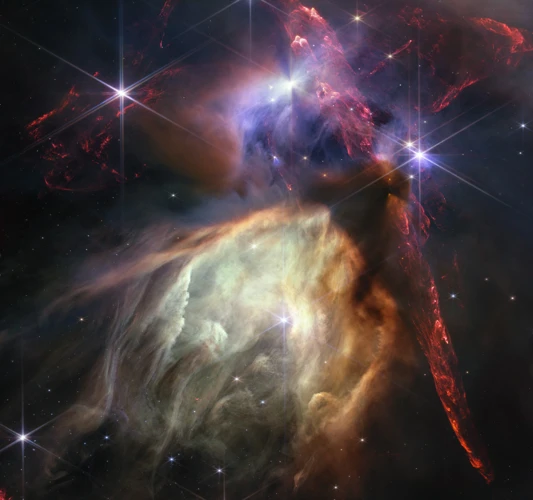
The stellar lifecycle is a mesmerizing journey that unfolds over billions of years, shaping the destiny of stars and leaving a profound impact on the universe. From their formation in vast clouds of gas and dust to their eventual demise, stars go through a series of transformative stages that contribute to the dynamic nature of the cosmos. The stellar lifecycle begins with the collapse of a nebula, giving birth to a protostar that gradually ignites nuclear fusion and enters the main sequence stage. During this phase, stars like our Sun steadily burn hydrogen, releasing immense energy and maintaining a delicate balance between gravity and radiation pressure. As stars age, they may evolve into red giants or supergiants, expanding in size and changing in appearance. Eventually, they undergo a stunning transformation, shedding their outer layers in a planetary nebula and leaving behind remnants such as white dwarfs, neutron stars, or even black holes. These cosmic remnants continue to influence the surrounding space, contributing to the formation of new stars and enriching the universe with heavy elements essential for life as we know it. The stellar lifecycle is a testament to the magnificent and ever-changing nature of the cosmos, inviting us to explore its intricacies and ponder our place within it.
Formation of Stars
The formation of stars is a mesmerizing process that begins within vast clouds of gas and dust known as nebulae. Within these stellar nurseries, gravity plays a crucial role in bringing together the scattered particles, causing them to coalesce into denser regions. As the gas and dust condense, the temperature and pressure within the core of the cloud increase, ultimately leading to the birth of a protostar. Formation of stars is driven by the force of gravity, which causes the protostar to contract and grow hotter over time. As more matter falls onto the protostar, it spins faster, forming a flattened disk of material surrounding it, known as an accretion disk. Within this disk, small solid particles collide and stick together, gradually growing in size to form planetesimals and, eventually, planets. This process is believed to be the precursor to planetary systems like our own solar system. As the protostar continues to accrete matter, reaching a critical point, the core becomes dense and hot enough for nuclear fusion to ignite, marking the beginning of the star’s main sequence stage. This remarkable journey from the formation of a star within a nebula to its emergence as a main sequence star sets the foundation for the diverse and intricate evolution that follows.
Main Sequence Stage
During the main sequence stage of stellar evolution, stars enter a phase of stability and balance that can last for billions of years. This stage is characterized by the ongoing fusion of hydrogen atoms in the stellar core, where immense pressure and temperature create the ideal conditions for this process to occur. A star’s position on the main sequence is primarily determined by its mass. Stars with lower mass, like our Sun, spend a longer time on the main sequence compared to more massive stars. These stars, like blue giants, have higher surface temperatures and shine brighter. The main sequence stage is essential as it represents the longest and most stable period of a star’s life. Its duration is determined by the rate at which it consumes its hydrogen fuel. As hydrogen is converted into helium, a tremendous amount of energy is released, causing the star to emit heat and light. This energy generation counterbalances the inward pull of gravity and maintains the star’s equilibrium. Stars in the main sequence stage serve as the foundation for understanding stellar evolution as a whole. Their properties and behaviors provide crucial insights into the physical processes occurring within stars, as well as the mechanisms that drive the formation and evolution of galaxies. So, the main sequence stage stands as a pivotal phase in stellar evolution, enabling us to unravel the secrets of the cosmos and gain a deeper understanding of our place within it.
Red Giant and Supergiant Phase
During the red giant and supergiant phase of stellar evolution, a star undergoes significant changes as it nears the end of its life. This phase occurs when a star has exhausted its hydrogen fuel in the core and begins to burn helium. The core contracts while the outer layers of the star expand, causing it to grow significantly larger in size. As a result, the star becomes a red giant, characterized by its reddish hue and increased luminosity. These red giants can be hundreds or even thousands of times larger than their previous main sequence stage.
The expansion of the star’s outer layers leads to a decrease in the surface temperature, causing it to emit a redder light. Its increased size also translates into a decrease in surface gravity, allowing the outer layers of the star to become more loosely held. Consequently, red giants often exhibit strong stellar winds and may even lose mass as they shed their outer layers into the surrounding space.
In certain cases, stars may undergo an even more dramatic transformation known as the supergiant phase. Supergiants are massive stars that have exhausted their nuclear fuel rapidly. As a result, they expand to enormous proportions, becoming some of the largest known stars in the universe. These extraordinary giants can shine with exceptional brightness, outshining even their red giant counterparts.
During the red giant and supergiant phase, the core of the star continues to contract and heat up. This sets the stage for the next stage of stellar evolution, which can vary depending on the mass of the star. High-mass stars may explode in a spectacular supernova event, leaving behind remnants such as neutron stars or black holes. On the other hand, lower-mass stars like the Sun will eventually shed their outer layers, forming exquisite structures known as planetary nebulas, while the core evolves into a white dwarf.
Understanding the red giant and supergiant phase is valuable for comprehending the life cycles of stars and the eventual fate of our own Sun. These stages play a crucial role in the enrichment of elements, the dynamics of galaxies, and the potential habitability of exoplanets. By exploring the complexities of stellar evolution, scientists gain profound insights into the workings of the cosmic universe and the remarkable processes that shape our existence.
Planetary Nebula and White Dwarf Stage
During the planetary nebula and white dwarf stage of stellar evolution, low-mass stars like our Sun reach the end of their lives. As these stars exhaust their nuclear fuel, they expand into red giants, enveloping their inner planets in a fiery embrace. The outer layers of the red giant are then expelled into space, forming a stunningly beautiful and intricate cloud of gas and dust known as a planetary nebula^1^. The core that remains after this explosion becomes a white dwarf, a dense and hot stellar remnant that is roughly the size of Earth but contains a mass similar to that of the original star. White dwarfs are incredibly hot, typically with temperatures exceeding 100,000 degrees Celsius. However, since they no longer undergo nuclear fusion, they gradually cool over billions of years^2^. These objects are incredibly dense, with a teaspoon of white dwarf material weighing several tons due to the powerful force of gravity. While they may seem relatively inactive, white dwarfs can still emit energy as they slowly cool and fade away over time.^2^ This stage of stellar evolution is not only important for understanding the life cycle of stars but also for the creation of elements necessary for life and the study of the cosmic events that shape our universe.
^1^Cultural Importance of the Pleiades Star Cluster
^2^Famous Meteorite Craters
Supernova and Neutron Star/Black Hole Stage
The supernova and neutron star/black hole stage marks the dramatic end of high-mass stars in their stellar evolution. When these massive stars have consumed all their nuclear fuel, their cores collapse under their own gravity, resulting in a catastrophic explosion known as a supernova. This awe-inspiring event releases an enormous amount of energy and launches a shockwave into space, causing the outer layers of the star to be expelled at incredible speeds. The remnants of the supernova can spread across vast distances, enriching the surrounding space with heavy elements such as iron, gold, and uranium, which are essential building blocks for celestial bodies.
What remains after the explosion depends on the mass of the star. For stars between 8 and 20 times the mass of our Sun, the core collapses further, forming a dense object known as a neutron star. A neutron star is incredibly compact, with a mass greater than that of the Sun crushed into a sphere roughly the size of a city. Neutron stars are incredibly dense, and a teaspoon of their material would weigh billions of tons on Earth. They also possess intense magnetic fields and can emit beams of radiation, which give rise to pulsars. Pulsars are highly magnetized, rapidly rotating neutron stars that emit pulses of electromagnetic radiation at regular intervals. These cosmic beacons provide valuable insights into the physics of extreme environments and help scientists study gravitational waves, the fabric of spacetime itself.
For stars with masses greater than 20 times that of the Sun, the core collapse is so extreme that not even neutron degeneracy pressure can withstand the force of gravity. This results in the ultimate fate of a massive star, the creation of a black hole. A black hole is an object with such strong gravitational pull that nothing, not even light, can escape from it. It is believed that black holes play a crucial role in shaping the structure of galaxies and are key players in cosmic events such as the formation of quasars and active galactic nuclei.
Understanding the supernova and neutron star/black hole stage is essential for comprehending the dynamic processes that occur in the universe. These explosive events not only shape the cosmic landscape but also contribute to the enrichment of the universe with heavy elements, paving the way for the formation of new stars, planets, and potentially life. By studying these cataclysmic phenomena, scientists can unravel the mysteries of the cosmos and gain deeper insights into the nature of our existence.
Impact of Stellar Evolution on Cosmic Events
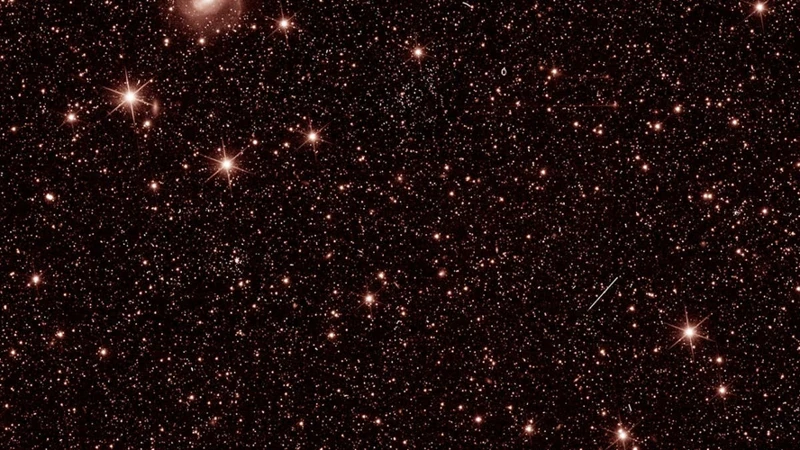
Stellar evolution plays a crucial role in shaping cosmic events and shaping the universe as we know it. One significant impact of stellar evolution is the formation of elements. Through the nuclear fusion process that occurs within stars, lighter elements such as hydrogen and helium are transformed into heavier elements like carbon, nitrogen, and oxygen. These elements are then dispersed into the surrounding space when massive stars explode as supernovae. This elemental enrichment is essential for the formation of new stars, planetary systems, and even life itself. Additionally, stellar evolution is responsible for generating vast amounts of energy. The fusion reactions within stars release immense amounts of heat and light, which in turn drive the processes that shape galaxies and other cosmic structures. The life cycles of stars affect the evolution of galaxies. As stars go through different phases, they can influence the formation of new stars, trigger the formation of planetary systems, and even contribute to the dynamics of galactic collisions and mergers. Understanding the impact of stellar evolution on cosmic events allows us to gain insights into the formation and evolution of our universe. So, let us delve deeper into the fascinating connections between stellar evolution and the workings of the cosmos.
Element Formation
Element formation is a crucial outcome of stellar evolution, playing a fundamental role in shaping the chemical composition of the universe. Inside the intense cores of stars, nuclear fusion processes give rise to the creation of heavier elements beyond hydrogen and helium. These fusion reactions generate an immense amount of energy, causing stars to radiate light and heat across the cosmos. Initially, during the main sequence phase, hydrogen atoms fuse together to form helium through a process called stellar nucleosynthesis. This releases an incredible amount of energy and is the primary source powering stars. As stars progress through their lifecycle, nuclear fusion reactions can produce even heavier elements such as carbon, oxygen, nitrogen, and beyond. When high-mass stars undergo supernova explosions, they release enormous amounts of energy, enabling the synthesis of even heavier elements like iron, lead, gold, and uranium. These elements are then dispersed into space, enriching the surrounding interstellar medium. As stellar remnants like white dwarfs and neutron stars interact with their environment, they can provide the necessary conditions for the formation of complex molecules and organic compounds. The incredible diversity of elements and compounds forged through stellar evolution serves as the building blocks for planets, moons, and life as we know it. In this way, stellar evolution acts as a cosmic alchemist, transforming simpler elements into a cornucopia of chemical diversity. The study of element formation in stars not only sheds light on the composition of our universe but also provides insights into the origins of matter and the potential for life to exist beyond our planet’s boundaries.
Energy Generation
Energy generation is a crucial aspect of stellar evolution. Stars are incredibly powerful sources of energy, and understanding the mechanisms behind energy generation is essential for comprehending their life cycle and the impact they have on the universe. The primary process responsible for the generation of energy in stars is nuclear fusion. In the core of a star, hydrogen atoms fuse together to form helium, releasing a tremendous amount of energy in the process. This fusion reaction occurs at extremely high temperatures and pressures, replicating the conditions found in the core of the Sun and other stars. The energy generated through nuclear fusion is what fuels stars, allowing them to emit light and heat. It also counteracts the force of gravity, preventing the star from collapsing in on itself. Without the continuous energy generation happening in their cores, stars would cease to shine and eventually undergo gravitational collapse, leading to their demise. This process of energy generation is integral not only to the survival of stars but also to their profound influence on cosmic events and the structures that exist in the universe. From the formation and evolution of galaxies to the creation of elements essential for life, energy generation in stars is a fundamental component in unraveling the complexities of the cosmos.
Galaxy Evolution
Galaxy evolution is intricately linked to the process of stellar evolution. Stars play a crucial role in shaping the dynamics and structure of galaxies throughout the cosmos. As stars form and evolve within galaxies, their life cycles significantly impact the overall properties and composition of these cosmic entities. One notable effect of stellar evolution on galaxy evolution is the feedback loop between star formation and the gas reservoirs within galaxies. As stars form, they release enormous amounts of energy, radiation, and stellar winds, which can heat and disrupt the surrounding gas. This feedback regulates the rate of star formation and can even quench it in certain regions of galaxies. Additionally, the life cycles of stars contribute to the enrichment of galaxies with heavy elements through processes like stellar nucleosynthesis and supernova explosions. These elements, such as carbon, oxygen, and iron, are essential building blocks for the creation of new stars, planetary systems, and even life itself. The study of galaxy evolution enables us to understand the intricate interplay between stars and their host galaxies, shedding light on the formation and transformation of these immense cosmic structures over billions of years. By unraveling the mysteries of galaxy evolution, we gain valuable insights into the origin and evolution of the universe as a whole. So, let us explore further the fascinating connection between stellar and galaxy evolution, and how it contributes to our understanding of the vast cosmos.
Using Stellar Evolution as a Cosmic Yardstick
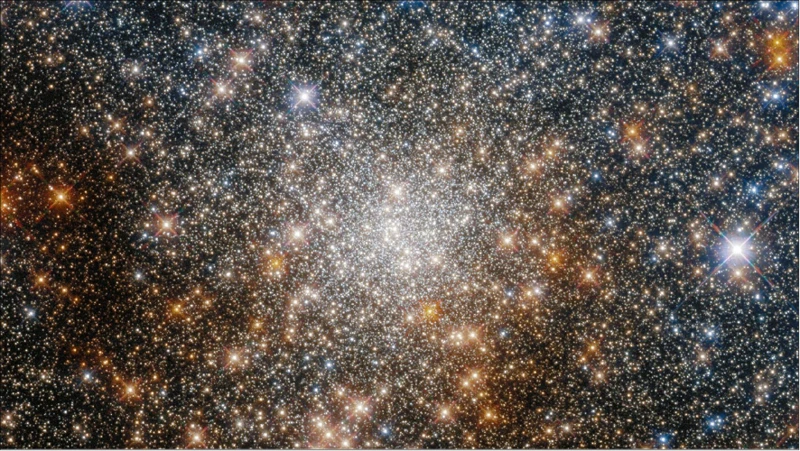
Understanding the vast distances and ages of celestial objects in the universe is no easy task. However, stellar evolution provides us with a valuable tool for measuring these cosmic phenomena. Using stellar evolution as a cosmic yardstick allows astronomers to make crucial distance measurements by comparing the observed properties of stars, such as their brightness and temperature, with their known evolutionary stages. By studying stars at various points in their life cycles, scientists can establish a relation between their intrinsic luminosity and observable characteristics. This relationship, known as the distance modulus, enables astronomers to estimate the distance to other galaxies, determine the size and scale of the universe, and even calculate the rate at which the universe is expanding. Stellar evolution provides insights into estimating the age of celestial objects by examining the stage of evolution of the stars within them. By understanding the pace at which stars evolve and the duration of each stage, scientists can infer the relative age of objects such as star clusters and galaxies. Stellar evolution not only enlightens us about the life cycles of stars but also serves as a valuable tool for unraveling the vastness and age of the universe we exist in.
Distance Measurement
Distance measurement is a crucial aspect of astronomy, allowing us to understand the vast scales of the universe and accurately determine the positions and properties of celestial objects. In the realm of stellar evolution, distance measurement plays a pivotal role in estimating the age and evolutionary stage of stars. Astronomers employ various methods and techniques to determine the distance to stars and other cosmic objects.
Parallax measurement: One commonly used method is parallax measurement. Parallax is the apparent shift in the position of a star when observed from different points in Earth’s orbit around the Sun. By measuring this shift, astronomers can calculate the distance to the star using simple trigonometry. The parallax method is most effective for relatively nearby stars within a few hundred light-years.
Cepheid variable stars: Cepheid variable stars are another valuable tool for distance measurement in astronomy. These stars pulsate in a regular pattern, and their luminosity is directly related to their pulsation period. By measuring the period of pulsation and comparing it to the observed brightness, astronomers can determine the intrinsic luminosity of the star. By comparing this intrinsic luminosity to the apparent brightness, the distance to the star can be derived.
Standard candles: Certain types of stars, such as Type Ia supernovae and RR Lyrae stars, have a consistent and known luminosity. These stars are referred to as “standard candles” because their known luminosity allows astronomers to determine their distance based on their observed brightness. By comparing the apparent brightness of these standard candles to their known luminosity, astronomers can accurately measure distances to galaxies and other celestial objects that contain these stars.
Redshift and Hubble’s Law: In the realm of cosmology, distance measurement is closely tied to the expansion of the universe. The redshift of light from distant galaxies can indicate their relative velocity and distance. Edwin Hubble’s observations showed that more distant galaxies exhibit larger redshifts, and he formulated Hubble’s Law, which states that the velocity of a galaxy is directly proportional to its distance from us. By measuring the redshift of galaxies, astronomers can estimate their distances and thus gain insights into the expansion history of the universe.
These methods, along with others like the cosmic distance ladder, help astronomers map out the three-dimensional structure of the universe, trace the evolution of galaxies, and precisely determine the distances to stars and stellar populations. Distance measurement is an essential aspect of stellar evolution studies, enabling us to piece together the puzzle of the universe and gain a deeper understanding of its vastness.
Estimating Age of Celestial Objects
Estimating the age of celestial objects is a fundamental aspect of understanding the history and evolution of the universe. It is through the study of stellar evolution that astronomers can determine the age of stars, galaxies, and other cosmic phenomena. One crucial method of age estimation is by analyzing the characteristics and properties of stars in different stages of their evolution. Stars go through various stages, and each stage has a specific duration, providing valuable information about its age. For example, by examining a star in the main sequence stage, astronomers can determine its age based on its mass and luminosity. Higher-mass stars have shorter main sequence lifetimes, while lower-mass stars have longer lifetimes. This knowledge allows astronomers to estimate the ages of stars based on their observed properties. Additionally, the study of star clusters, groups of stars formed from the same molecular cloud, provides valuable insights into stellar ages. In these clusters, stars are born around the same time, allowing astronomers to compare their evolutionary stages and infer their ages. By analyzing the distribution of stars across different evolutionary phases within a cluster, astronomers can estimate the age of the cluster as a whole. Other techniques, such as white dwarf cooling and radioactive dating of meteorites, also contribute to age estimation in the universe. Through these methods and a deep understanding of stellar evolution, astronomers can piece together the timeline of cosmic events and gain a better understanding of how the universe has evolved over billions of years.
Unraveling the Origins of Life

Unraveling the origins of life is a fascinating area of study that involves understanding the role of stellar evolution in the formation of the building blocks necessary for life to emerge. Through stellar evolution, stars undergo various stages that fuel the universe with elements crucial for life, such as carbon, oxygen, and nitrogen. During the late stages of stellar evolution, high-mass stars release these elements into space through explosive supernova events. These enriched materials then mix with interstellar gas clouds, creating new generations of stars and planetary systems rich in the necessary components for life. The study of stellar evolution provides insights into the habitability of exoplanets, as the evolution of their host stars can influence the conditions necessary for life to thrive. By unraveling the mysteries of stellar evolution and its impact on the chemistry of the cosmos, scientists can gain a deeper understanding of the origins of life and our place in the vast universe.
Role of Stellar Evolution in Chemical Enrichment
The role of stellar evolution in chemical enrichment is crucial for understanding the composition of the universe and the origins of the elements that make up all matter. As stars evolve and progress through different stages, they undergo nuclear reactions that generate and release a wide variety of elements. The fusion processes taking place within stellar cores produce heavier elements, such as carbon, oxygen, and iron. When massive stars reach the end of their lives and explode in supernovae, they release these synthesised elements into the surrounding space, enriching the interstellar medium.
This process of chemical enrichment through stellar evolution is responsible for the formation of new stars and planetary systems. The recycled materials from previous generations of stars contain a mixture of elements that provide the building blocks for the formation of new celestial objects. Planetary systems, including our own, are believed to have formed from the remnants of exploded stars, incorporating the enriched elements into their composition.
The exploration of exoplanets has revealed the potential for habitable environments beyond our solar system. The balance of essential elements, such as carbon, oxygen, and nitrogen, plays a significant role in determining the habitability of exoplanets. The understanding of stellar evolution allows scientists to trace the history of chemical enrichment and the distribution of elements across the universe, helping to identify potential locations for habitable worlds.
By studying the chemical composition of stars at different stages of evolution, astronomers gain insights into the processes that occur throughout the universe. They can determine the abundances of various elements, track their origins, and understand how the composition of galaxies and cosmic structures evolve over time. The role of stellar evolution in chemical enrichment is essential in piecing together the intricate puzzle of the universe’s formation and unraveling the mysteries of our cosmic origins.
Impact on Exoplanet Habitability
The impact of stellar evolution goes beyond the stars themselves and extends to the potential habitability of exoplanets. Exoplanets are planets that orbit stars outside of our solar system, and understanding their habitability is crucial in the search for extraterrestrial life. The evolution of a star directly affects the conditions on its orbiting exoplanets, shaping their environments and potential for sustaining life.
During the main sequence stage of stellar evolution, when a star is in a stable phase, exoplanets within the star’s habitable zone have the potential for liquid water to exist on their surfaces. Liquid water is a key ingredient for life as we know it, so the presence of it greatly increases the chances of habitability. However, as a star evolves, its luminosity and temperature change, potentially altering the conditions on its exoplanets.
When a star enters the red giant phase, it swells in size and releases a significant amount of energy. This expansion can cause exoplanets to be engulfed or experience extreme heating, making the surface uninhabitable. Additionally, the increased stellar radiation can strip away the exoplanet’s atmosphere, removing the protective layer that shields it from harmful cosmic rays. This can further hinder the possibility of habitability.
During the later stages of stellar evolution, when a star goes through a supernova or neutron star/black hole phase, the release of immense energy and radiation can have catastrophic consequences for nearby exoplanets. The intense radiation and shockwaves can strip away the exoplanet’s atmosphere, sterilize its surface, or even completely destroy it.
However, the impact of stellar evolution on exoplanet habitability is not entirely negative. The death of a massive star in a supernova explosion can lead to the dispersal of heavy elements into space, enriching the surrounding interstellar medium. These enriched materials can then become the building blocks for new stars and planetary systems, potentially providing the necessary ingredients for the formation of habitable exoplanets in the future.
Stellar evolution plays a crucial role in determining the habitability of exoplanets. The changes in a star’s luminosity, temperature, and radiation output throughout its evolution directly affect the conditions on its orbiting exoplanets. While some stages of stellar evolution may render exoplanets inhospitable, the death of massive stars can also contribute to the formation of new planetary systems with the potential for habitability. Understanding these intricate connections between stellar evolution and exoplanet habitability is vital in our quest to unravel the mysteries of life beyond our own planet.
Stellar Evolution and the Expanding Universe
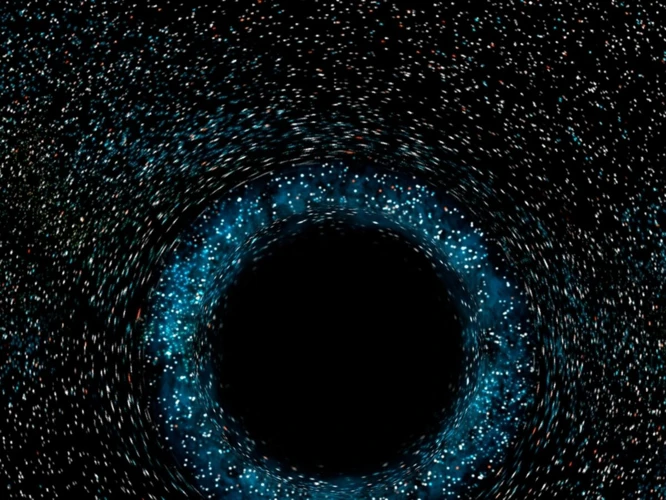
Stellar evolution and the expanding universe are interconnected aspects that provide valuable insights into the nature of our cosmos. The phenomenon of stellar evolution helps us understand how stars change and evolve over time, while the expanding universe reveals the vast scale and dynamic nature of our cosmic environment. As stars undergo their life cycle, they contribute to the enrichment of the universe through the creation and dispersal of elements. This process, known as nucleosynthesis, plays a crucial role in shaping the chemical composition of the universe and the formation of new celestial bodies. Additionally, stellar evolution is closely linked to the concept of cosmological models, which describe the evolution and structure of the universe as a whole. By studying the evolution of stars, scientists can gain valuable insights into the larger cosmic processes and potentially unlock hidden secrets about the nature of our expanding universe. The connections between stellar evolution and the expanding universe continue to inspire astronomers and deepen our understanding of the complexities of the cosmos.
Linkages to Cosmological Models
Linkages to cosmological models are an essential aspect of understanding stellar evolution and its implications on the broader scope of the universe. Cosmological models provide frameworks and theories that help explain the origin, evolution, and overall structure of the universe.
1. Big Bang Theory: Stellar evolution plays a crucial role in supporting the Big Bang Theory, which suggests that the universe originated from a singular, highly dense and hot point. As the universe expanded, matter began to cool and form structures, including stars. By studying the lifecycles of stars and their distribution across galaxies, scientists can gather evidence to support the Big Bang Theory.
2. Expansion of the Universe: The study of stellar evolution contributes to our understanding of the expansion of the universe. By observing the redshift of light emitted from distant galaxies, scientists can determine the rate at which the universe is expanding. This expansion affects the dynamics of stellar evolution, as the expanding space causes a shift in the wavelengths of light emitted by stars.
3. Dark Matter and Dark Energy: Cosmological models incorporate the concepts of dark matter and dark energy, which are believed to be the driving forces behind the accelerated expansion of the universe. Stellar evolution studies provide insights into the distribution and behavior of dark matter, as well as the influence of dark energy on the formation and evolution of galaxies.
4. Formation and Evolution of Large-Scale Structures: Stellar evolution also contributes to our understanding of the formation and evolution of large-scale structures in the universe, such as galaxy clusters and superclusters. By studying the characteristics and distribution of stars within these structures, scientists can validate and refine cosmological models that explain their formation.
The linkages between stellar evolution and cosmological models are crucial for comprehending the origin, structure, and evolution of the universe. Through studying stellar lifecycles, observing the expansion of the universe, exploring dark matter and dark energy, and understanding the formation of large-scale structures, scientists gain valuable insights into the intricate workings of the cosmos. These connections contribute to our ongoing quest to uncover the mysteries of the universe and our place within it.
Beyond the Observable Universe
Beyond the observable universe lies a realm of cosmic mysteries waiting to be unraveled. The concept of the observable universe refers to the portion of the universe that we can currently detect and observe. However, beyond this boundary, there are countless celestial objects and phenomena yet to be explored. One intriguing aspect of stellar evolution is its relevance to understanding the universe beyond what we can directly observe. By studying the life cycles of stars within our observable universe, scientists can gain valuable insights into the processes and mechanisms that shape the cosmos on a larger scale. These insights, in turn, allow us to make informed hypotheses and predictions about the composition and behavior of celestial objects beyond our reach. From the formation and evolution of galaxies, the birth of black holes, to the potential existence of other intelligent life forms, stellar evolution acts as a guide, enabling us to imagine and comprehend the incredible cosmic tapestry that extends beyond the horizons of our senses. While our current understanding of the universe is limited, it is through the study of stellar evolution and its implications that we can strive to expand the boundaries of our knowledge and venture into the uncharted territories of the cosmos.
The Future of Stellar Evolution Studies
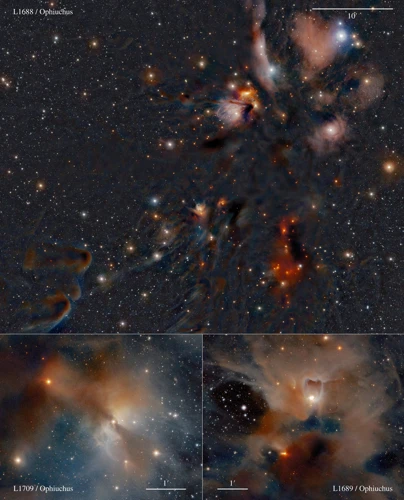
The future of stellar evolution studies is an exciting frontier in the field of astrophysics. As technology and observational methods continue to advance, scientists are poised to uncover even more insights into the intricacies of stellar evolution. One area of focus is the utilization of sophisticated telescopes and instruments, such as the upcoming James Webb Space Telescope, which will provide unprecedented levels of detail and sensitivity in observing distant stars and their evolutionary processes. These advancements will allow researchers to study stellar evolution across a wide range of masses and ages, expanding our understanding of how different factors influence a star’s evolution. Additionally, advancements in computational tools and modeling techniques will enable scientists to simulate and predict the complex dynamics and behavior of stars at various stages of their evolution. This will lead to a deeper comprehension of the mechanisms that drive stellar processes, such as nucleosynthesis and stellar winds. Future studies will likely explore the role of binarity and multiple star systems in stellar evolution, as well as investigating the effects of external factors, such as interaction with planetary systems and interstellar medium. By combining observations, theoretical models, and cutting-edge technology, the future of stellar evolution studies promises to provide profound insights into the nature of stars and their influence on the universe. With each new discovery, we peel back another layer of the cosmic tapestry and uncover the intricate dance of stellar evolution that shapes the cosmos as we know it.
Conclusion

In conclusion, the study of stellar evolution plays a crucial role in expanding our understanding of the universe. By examining the life cycles of stars, scientists have gained valuable insights into the processes that shape the cosmos. Stellar evolution provides us with a wealth of knowledge regarding element formation, energy generation, and galaxy evolution. Moreover, it serves as a cosmic yardstick, allowing us to measure distances and estimate the age of celestial objects. The significance of stellar evolution extends beyond astrophysics, as it plays a vital role in unraveling the origins of life through chemical enrichment and impacting the habitability of exoplanets. Furthermore, the linkages between stellar evolution and cosmological models shed light on the expanding universe and give us a glimpse into the mysteries that lie beyond our observable reach. As we continue to explore the depths of space, the future of stellar evolution studies holds immense promise for further discoveries and a deeper understanding of the cosmos. By unraveling the secrets of stellar evolution, we gain a greater appreciation for the grandeur and complexity of the universe we call home.
Frequently Asked Questions

1. How long does stellar evolution take?
The duration of stellar evolution varies depending on the mass of the star. Higher-mass stars have shorter lifespans, typically ranging from millions to billions of years. Lower-mass stars like our Sun can remain in the main sequence for about 10 billion years.
2. Can stars be born anywhere in the universe?
Stars are predominantly formed within galaxies, where the conditions are favorable for the collapse and fusion of gas and dust. These galaxies provide the necessary resources and gravitational forces for star formation to occur.
3. What happens during a star’s red giant phase?
During the red giant phase, a star undergoes expansion and becomes larger and cooler. This occurs when the star has exhausted the hydrogen fuel in its core and starts burning helium. As a result of the expansion, a red giant can become hundreds of times larger than its original size.
4. What triggers a supernova explosion?
A supernova explosion is triggered in high-mass stars when they have exhausted their nuclear fuel. This leads to a collapse of the star’s core, followed by a powerful explosion that releases an immense amount of energy and debris into space.
5. How are elements heavier than iron formed in stellar evolution?
Elements heavier than iron are primarily formed during supernova explosions. The intense energy and pressures generated by the explosion enable the synthesis of these heavier elements, which are then dispersed into space and become building blocks for future stars and planets.
6. Can stars become black holes?
Yes, stars with extremely high masses can undergo a gravitational collapse after a supernova explosion, resulting in the formation of black holes. Black holes have such strong gravitational forces that not even light can escape their grasp.
7. How do astronomers measure the distance to stars?
Astronomers use various techniques to measure stellar distances, such as parallax, spectroscopic parallax, and the period-luminosity relationship of certain types of stars. These methods allow scientists to estimate distances to stars within our galaxy and beyond.
8. Can the age of a star be determined?
Yes, the age of a star can be estimated by studying its properties, such as its luminosity, temperature, and chemical composition. By comparing these characteristics to stellar models, scientists can approximate the age of a star.
9. How does stellar evolution relate to the origin of life?
Stellar evolution plays a key role in chemical enrichment, as stars generate and distribute elements necessary for life, such as carbon, oxygen, and nitrogen. These elements become incorporated into planets and are essential building blocks for the development of life forms.
10. How does stellar evolution contribute to our understanding of the expanding universe?
Stellar evolution provides insights into the cosmic processes that shape the universe. By studying how stars evolve and change over time, scientists can gain a deeper understanding of the underlying mechanics that drive the expansion of the universe and the formation of galaxies.
References
Frequently Asked Questions

1. What is the significance of stellar evolution in understanding the universe?
Stellar evolution plays a vital role in understanding the universe as it helps us comprehend the life cycle of stars, the formation of elements, and the evolution of galaxies.
2. How does stellar evolution impact cosmic events?
Stellar evolution influences cosmic events through the formation of elements, the generation of energy, and the evolution of galaxies, shaping the course of the universe’s development.
3. Can stellar evolution be used as a yardstick for measuring cosmic distances?
Yes, stellar evolution can be employed as a cosmic yardstick for measuring distances in the universe, enabling astronomers to determine the vastness of celestial objects.
4. What role does stellar evolution play in unravelling the origins of life?
Stellar evolution is essential in the chemical enrichment of the universe, contributing to the creation of elements necessary for the development of life. It also impacts the habitability of exoplanets.
5. How does stellar evolution link to cosmological models?
Stellar evolution provides crucial insights into cosmological models, helping astronomers understand the larger processes at work in the universe and contributing to our understanding of its evolution.
6. How does stellar evolution connect to the expanding universe?
Stellar evolution offers connections to the expanding universe by providing clues about the origins of galaxies and their relationship with the overall expansion of space.
7. What is the future of stellar evolution studies?
The future of stellar evolution studies holds promising advancements in our understanding of star formation, the behavior of various types of stars, and their impact on the larger cosmos.
8. How is the age of celestial objects estimated using stellar evolution?
By observing the stage of stellar evolution, astronomers can estimate the age of celestial objects, utilizing various indicators such as the luminosity and temperature of a star to gauge its lifecycle.
9. How does stellar evolution impact the habitability of exoplanets?
Stellar evolution directly affects the habitability of exoplanets by influencing the abundance of essential elements and the long-term stability of planetary systems around evolving stars.
10. How does stellar evolution contribute to element formation?
Stellar evolution is responsible for the formation of heavy elements, as the process involves nuclear fusion within stars, leading to the synthesis of elements crucial for the existence of life.

